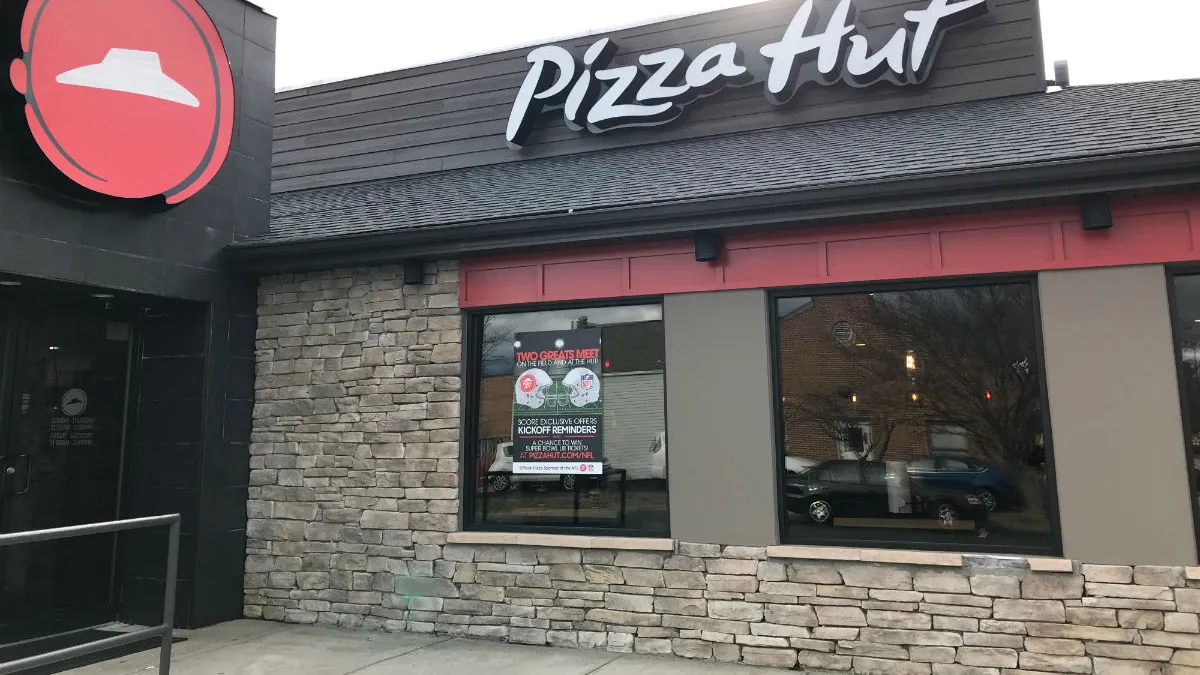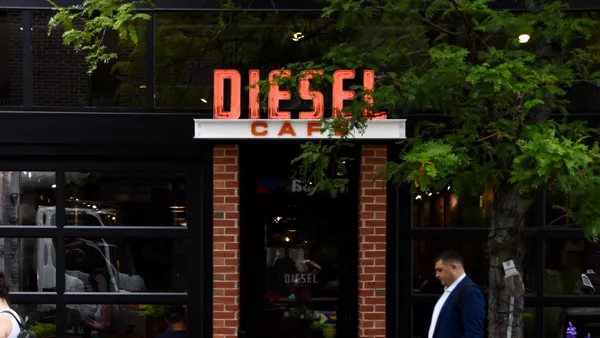Dive Brief:
- New research from Cuebiq shows that the top four U.S. pizza chains generated more than 25 million visits from April 24 through Aug. 4.
- Pizza Hut led in share of visits, with 36%, followed by Little Caesars, at 31%, Domino’s at 24% and Papa John’s with 10%.
- Pizza Hut and Little Caesars have the same brand loyalty figure: 76% of their respective customers didn’t visit any other pizza brand during the period. Papa John’s customers were the least loyal of the group.
Dive Insight:
The fact that Pizza Hut has the highest share of visits shouldn’t be a major surprise. The chain has the largest footprint of the group by far, and one that entails quite a few dine-in assets. At the end of 2018, Pizza Hut had just under 7,500 units in the U.S. Today, 6,100 of its locations are traditional restaurants and 1,350 are express stores. This is compared to Domino’s 5,876 total units, Little Caesars’ 4,350 and Papa John’s 3,200.
As Pizza Hut plans to close about 500 of its lowest-performing locations within the next two years, and transform others into delivery/carryout-focused units, these footfall numbers could shift.
It also underscores that pizza has very much become a delivery-dominated space. A majority of Domino’s business comes from delivery and carryout, for example, and the chain controls the overall pizza market share after surpassing Pizza Hut in 2017.
However, foot traffic still exists and is still a critical channel for customers who increasingly want omnichannel options to get their food. Dine-in also benefits the restaurant — customers who linger longer tend to order more, can be upselled throughout their stay and often order high-margin alcoholic drinks.
This gives Pizza Hut an advantage, as 40% of visits at the chain lasted at least 30 minutes. By comparison, just 28% of Little Caesars customers stay for at least 30 minutes.
Cuebiq’s research shows that customers of both brands will swap each other out — 13% of Pizza Hut customers visited a Little Caesars, while 13% of Little Caesars customers visited a Pizza Hut. With 500 less Pizza Hut locations, this number could skew a little more in Little Caesars’ favor. However, even if it does fully close 500 restaurants, Pizza Hut’s footprint will continue to loom larger than Little Caesars by about 2,700 restaurants, providing customers with far more access.
The North American pizza market is expected to grow 10.2% in the next four years, with fast casual concepts Mod Pizza and Blaze both ripe for growth, so the foot traffic race is bound to get even more interesting.














